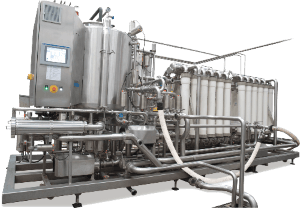What Methods are Used for Filtering Lees?
Filtering lees allows wineries to recover additional product. Wine and juice can be added back to the process to increase overall production capacity while simultaneously reducing the cost for waste removal.
Diatomaceous Earth (DE) filtration systems such as rotary vacuum drum filters (RVDF) and chamber press filters are the traditional methods used for filtering lees. While these systems can filter high solids effectively, the open design allows for oxygen pick up which can have a negative affect on quality. Recovered wine often needs further processing and is typically downgraded in value and used in blends instead of added back to the original batch.
In many small and mid size wineries, the lees volume from a single batch is often too small for processing with DE based systems. In such cases, the wineries will delay processing the lees and wait to accumulate an appropriate volume. This delay leads to further reductions in wine quality, hence the potential to recover high value product is lost.
DE based technologies require large volumes of Diatomaceous Earth filter aid. This increases the winery waste, disposal, labor, and losses; all factors contributing to high operating costs.
In more recent years, crossflow filtration is becoming the preferred choice of winemakers for filtering lees because it overcomes the obstacles associated with traditional DE based technologies. Filtration is achieved with microporous membranes without the need for filter aids. With no powder handling and an enclosed system, operation is more hygienic and does not create DE waste for environmental landfill.
These systems are usually automated so wineries can use their labor more effectively, which is especially advantageous during the busy harvest period.
Complete the Form to Receive Future Communication





